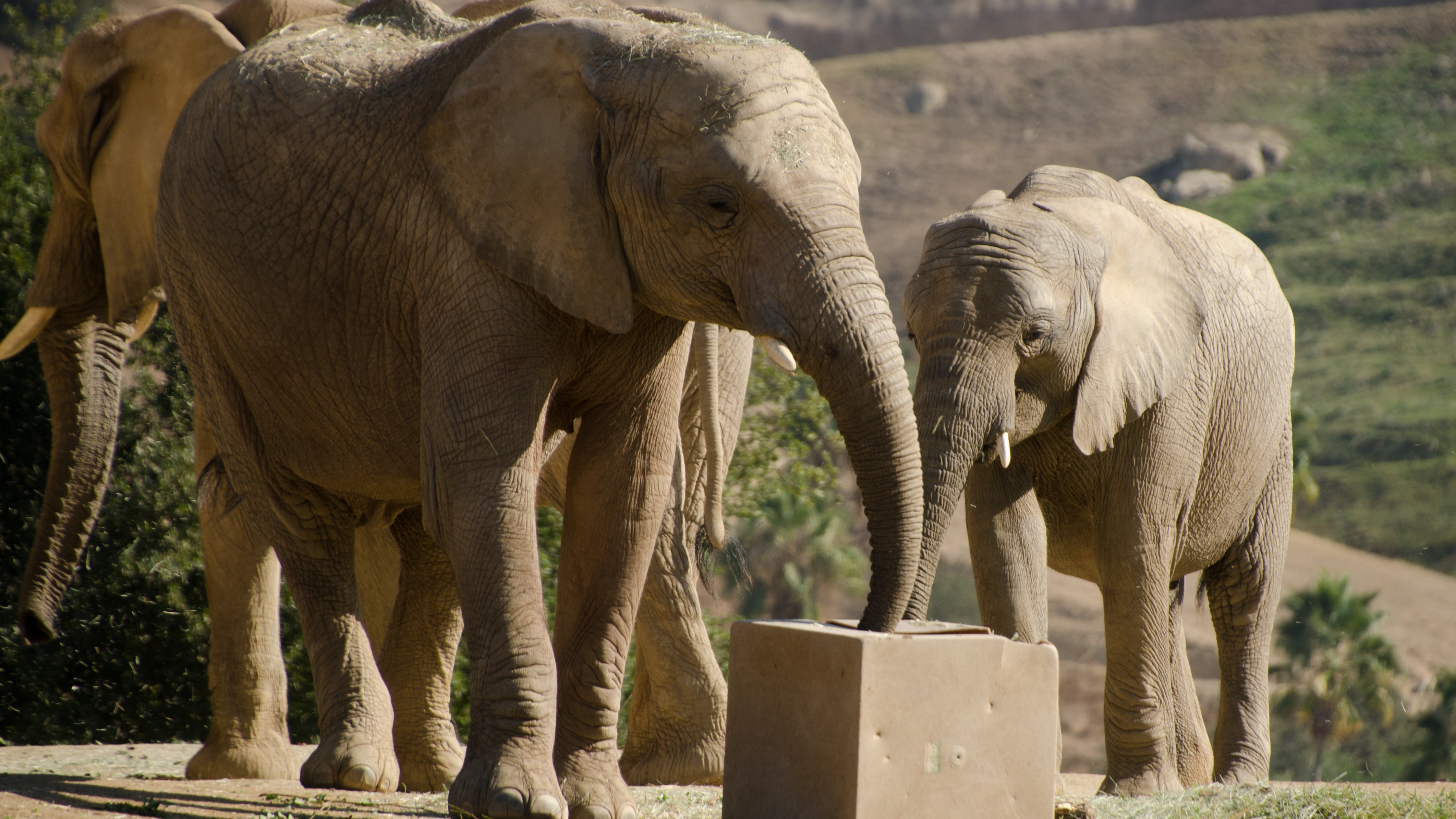Watch zoo elephants form protective 'alert circle' around young during 5.2 San Diego earthquake
The San Diego Zoo Safari Park's elephants raced to protect their calves with an "alert circle" when a 5.2 magnitude earthquake struck Julian in Southern California.

Rare footage captures the moment elephants at the San Diego Zoo Safari Park formed a protective ring around their calves as a 5.2 magnitude earthquake wobbled Southern California yesterday morning (April 14).
One of the zoo's cameras caught three older elephants (Ndlula, Umngani and Khosi) attempting to shield two 7-year-old calves (Zuli and Mkhaya) from potential danger, The Associated Press reported.
"Elephants have the unique ability to feel sounds through their feet and formed what [is] known as an 'alert circle' during the 5.2 magnitude earthquake that shook Southern California this morning," representatives from the San Diego Zoo Safari Park wrote in a Facebook post on Monday.
"This behavior, demonstrated here by Ndlula, Zuli, Mkhaya, Umngani, and Khosi, is a natural response to perceived threats that helps protect younger elephants and the herd as a whole," they added.
The earthquake struck 3 miles (5 kilometers) south of Julian in San Diego County — around 33 miles (53 km) west of the zoo — at 10:08 a.m. local time on Monday, according to the United States Geological Survey. There haven't been any reports of injuries or damage to property as a result of the quake.
Related: Elephants say 'hello' to friends by flapping their ears and making little rumbly noises
African elephants (Loxodonta africana) live in tight-knit social groups based around a lead female, or matriarch. Their enormous size means that elephants have few natural predators in the wild. However, lions, hyenas, and crocodiles may attempt to take down young or sick members of the herd, according to The Maryland Zoo in Baltimore.
Get the world’s most fascinating discoveries delivered straight to your inbox.
If the matriarch detects a predator, she will herd the offspring together as the adults form an outward-facing circle like the one seen in the footage from San Diego Zoo. The ring is designed to keep the young safe by placing adults between them and predators. The elephants may also use this circle to assess potential dangers, such as an earthquake.
Once in a circle, "they sort of freeze as they gather information about where the danger is," Mindy Albright, a curator of mammals at the San Diego Zoo Safari Park, told The Associated Press.

In San Diego, the female calf, Mkhaya, stayed in the center of the circle, while the male calf, Zuli, stood on the edge. Albright said that was because Zuli wanted to show his courage and independence.
Khosi, one of the older elephants who helped raise Zuli, repeatedly tapped Zuli on the back with her trunk, and even on the face, as if patting him to say, "things are OK," and "stay back in the circle," according to Albright.
San Diego Zoo Safari Park representatives noted that the elephants resumed their normal daily activities after the earthquake had passed, though they remained in close proximity to one another.
"After this morning's shake up, the [elephants] returned to business as usual and are safe along with the rest of the crew at San Diego Zoo Wildlife Alliance," representatives wrote.

Patrick Pester is the trending news writer at Live Science. His work has appeared on other science websites, such as BBC Science Focus and Scientific American. Patrick retrained as a journalist after spending his early career working in zoos and wildlife conservation. He was awarded the Master's Excellence Scholarship to study at Cardiff University where he completed a master's degree in international journalism. He also has a second master's degree in biodiversity, evolution and conservation in action from Middlesex University London. When he isn't writing news, Patrick investigates the sale of human remains.
You must confirm your public display name before commenting
Please logout and then login again, you will then be prompted to enter your display name.
